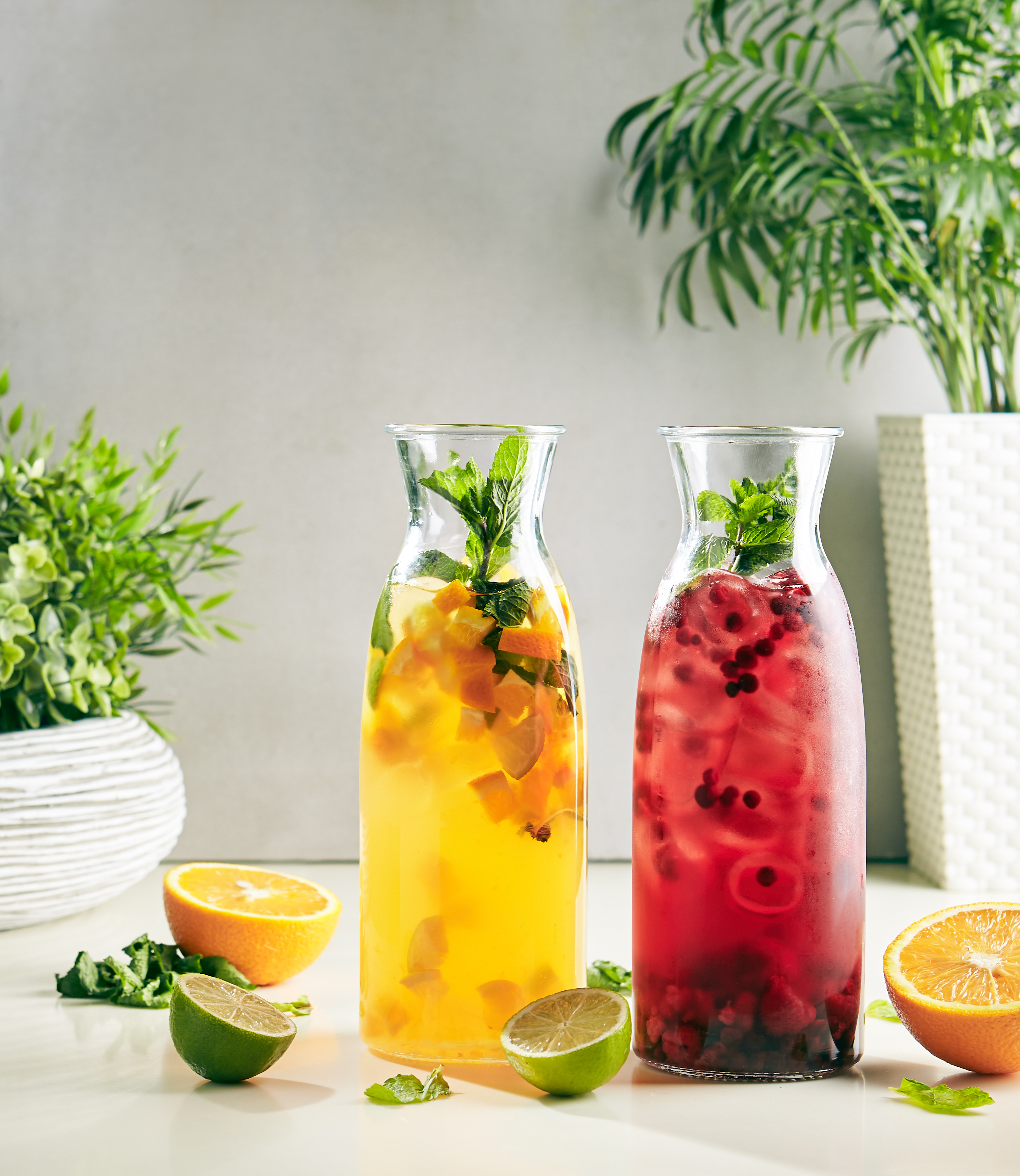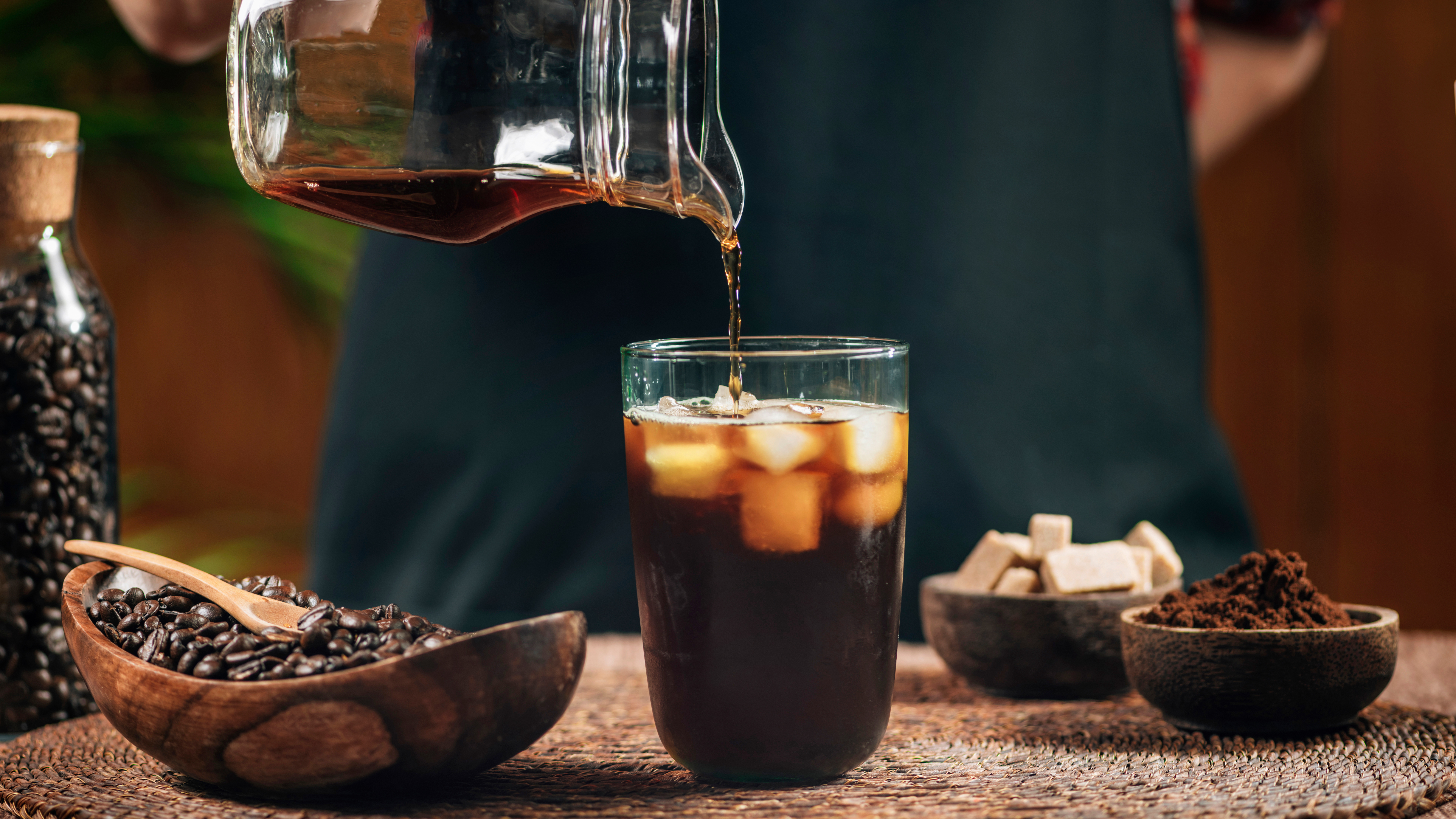Free digital copy
Get Speciality Food magazine delivered to your inbox FREE
Get your free copy
Tea and coffee punctuate our lives in Britain. They’re what we grab on the way to work, or as we’re kicking our shoes off at the end of a busy day. A cuppa is what many of us crave when we return from holiday, with a brew often the top priority once those suitcases have been lugged in from the car.
Figures from the British Coffee Association reveal we drink an average 98 million cups of coffee a day in the UK, with tea just pipping this to the post at around 100 million.
But our daily ritual is no longer as predictable as a hot cup of cha and a biscuit. HFSS regulations, alcohol moderation, and the desire for ever ‘cleaner’, more functional drinks has driven a stream of innovations in this sector. Where the to-go area in stores was once dominated by colas and high-sugar fruit sodas, now sit kombucha, gut-friendly fizz, flavoured sparkling waters, and a growing number of RTD cold brew teas and coffees.
Consumers are increasingly seeking out non-traditional drinks in cafe and foodservice settings too - hello iced coffee and iced turmeric latte.
Tea sommelier Candice Mason of Mother Cuppa says the cold brew trend is really taking off. “More and more people are looking for healthy ways to care for their bodies, and many are reducing caffeine and alcohol,” she explains. “I posted a reel last summer for a few cold brews, and people loved them!”
According to Mintel, RTD tea is being sought out by the ‘sober curious’, while Mordor Intelligence points to demand for cold brew coffee growing due to our busy lifestyles, saying the “excellent source of instant energy is becoming popular amongst youngsters and the middle-aged working population.” It cites functionality, innovation, and new flavours and tastes as trends in the cold brew and RTD coffee category.
It’s clear that RTD tea and coffee could prove a strong investment in fine food retail, but what about the in-store experience?

Senior tea and coffee buyer Angela Pryce, who has worked as a buyer, taster and blender for two decades, has a deep understanding of developing markets, and says cafes and foodservice outlets offering a form of cold brew coffee or tea this year will be moving in the right direction.
She says chilled tea “lends itself really well as a different way of serving tea, which has traditionally always been served hot.”
But to hit the mark, some preparation is needed. “The teas need to be brewed, and chilled down. It’s a case of making them the day before, or in the morning, to get ahead. I think it’s a great, cost-effective way of selling tea and herbal infusions, and a healthier alternative to a soft drink. The flavours are brilliant, and tea is a natural product that’s naturally sugar free and calorie free, provided it’s not served with sugar.”
From a technical perspective, unlike coffee, which can be brewed with cold water, Angela says it’s important to always brew tea with boiling water. “This is because it’s not specced to be brewed cold. Teas and herbal teas are not necessarily heat treated in the production process.”
Though, she adds, technology has moved on, with more and more products becoming available specifically for cold brewing. The company she is working for currently, for example, has just released a range of four cold brew teabags.
“With tea, in general,” Angela says, “if you’re wanting to serve it cold you can do it a couple of ways. One, brew it hot and then chill it in the fridge. Or brew a concentrate, make it double strength, and pout it over ice – then it’s ready immediately.”
Green tea works well, she adds. And “oolong tea is beautiful cold, because of its profile, being quite light, crisp and astringent. It really suits this brewing method.”
Angela also points towards tropical flavours as being ‘hot’ in 2024. “Tropical is everywhere in the cold market at the moment!”
Candice suggests hibiscus and mint as being perfect options for cold brewing. “Hibiscus is fruity and sweet, and mint is refreshing. They are great in a non-alcoholic gin or ‘nosecco’ mocktail. I also love an elderflower and rooibos cold brew tea.” Angela says to avoid cold brewing black tea, which would be overly tannic and bitter, sticking to green, oolong or white for a gentler flavour profile.
She sees these kinds of drinks becoming increasingly prolific in both home and retail/cafe settings as consumers look to reduce the amount of sugar in their diets. “Sometimes water on its own can be a bit boring. Cold brew tea is a fabulous way to hydrate your body. My herbal tea can taste like a sweeter drink, with no sugar, so it makes a great alternative.”
Ryan Moore of Blendsmiths, which crafts premium hot chocolates, chai, matcha, and superfood blends, says being innovative, and thinking of new ways to prepare and present drinks traditionally associated with the colder months, can open a window for cafe operators to add value to their offering.
“It’s about being able to show the versatility of hot drinks all-year-round. We’re finding a lot of people, especially younger people on social media, are using our products cold, and maybe topping them with yoghurt, or adding fruit.”
You “put the powder in a jug with milk and steam it, but you can do exactly the same process and make them cold, blending them with ice for the most amazing iced latte, iced chocolate or iced matcha. I would say 5% of our customers are making our drinks cold, but I still get asked a lot if you can do it, and I’m like ‘yeah’!”
Ryan is about to launch new drinks tapping into the cold market, based on colour, and using ingredients such as blue pea flower extract. He says it’s critical not to stand still as there’s strong demand every year for the ‘next big thing’. “With migration, and people moving around and living and travelling all over the world, there is an expectation to have something different. Consumers know their chai and matcha and turmeric lattes, and they’re looking for something exciting, and expecting to see things they’ve never had before – and that’s where these drinks come into play.”

Amir Montazar of Etude Coffee is excited by the way interest in cold brew is opening up new opportunities – which he thinks could lead to cafes opening later, bridging the gap in the late afternoon before customers head to bars or restaurants, as is the case in many parts of Europe.
“At Silo [one of Amir’s cafes], we had a lot of requests for iced drinks in 2023,” he says. “In the UK we are having longer and warmer summers compared to five years ago. That means we are selling more cold coffees.” Amir is also finding his wholesale clients are expanding their cold coffee and coffee-based drink menus in response to customer demand.
There are different ways to cold brew, Amir says, mentioning the ‘Three Ts’ - temperature, turbulence and time. “If you increase any of these three your extraction will be faster, and you will get more from your coffee.”
He prefers to brew in cold water over a longer time, which brings out the properties and essence of the raw ingredient in the purest way. “I’ve found it highlights the brightness and acidity of the coffee, rather than the body. It means you can get a slightly different experience from the same coffee than if it was served hot.”
Amir prepares cold brew using a higher ratio of coffee to water (1:3 or 1:4). “The result is a very concentrated extract. When you want to serve it, you need to dilute it and that’s what I like about it. Dilute it with cold milk to give you a great iced latte. In America they use half and half, which is half cream, half milk, and that would give even more texture, similar to having a flat white.”
He prefers to brew a concentrate because of the different options it opens up, and its longevity, with the ability to keep it in the fridge for up to a week.
For the best results “choose a single origin coffee which has a specific character, rather than a generic espresso blend. Blends can muddy the flavour and the joy of a cold brew,” Amir says. “For example, if you’re using a beautiful coffee from Kenya, you will have all those fruity notes specific to the country and region. It will taste like raspberries or some sort of red fruit. I find that more interesting.”
These brews lend themselves naturally to espresso martinis and other mixed beverages which are, says Amir, taking off in a big way. “It’s much more difficult to do a martini with a hot brew coffee, and the reason is that hot brew coffee changes character as it cools down. Very quickly your window of using it in a mixer drink is limited, and that’s the reason high-end bars prepare an espresso martini with cold brew.”
He’s seeing “some really interesting things, like chocolate espresso tonic on social media, and mixologists developing more coffee-based cold drinks.” And Amir believes interest will only grow, with more cafes looking to become licensed in future, offering low and no-alcohol cold brew options. In fact, he’s so confident, he’s looking at licensing his own premises. “In a speciality coffee shop the cocktails they would serve would be very focussed on the taste rather than alcohol content,” Amir says.
“Because of operating times, they would be open only, I think, until 7pm or 8pm. Somewhere you can go to enjoy the afternoon and early evening with a couple of nice, interesting alcoholic or non-alcoholic drinks.”
Amir believes the growth of premium decaf coffee options will contribute to specialist cafes serving drinks later in the day. “Decaf coffee has improved a lot. We now have really tasty speciality decaf, which is a great option to be added to mixer drinks in the evening without the caffeine to interrupt your night. From a business perspective, with a view to having longer operating times, it makes a lot of sense to apply for a license, and I think we’ll see more of that. I’m asked a lot by customers to open later!”